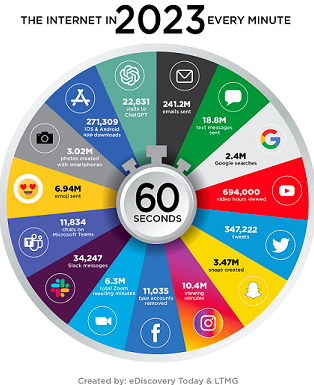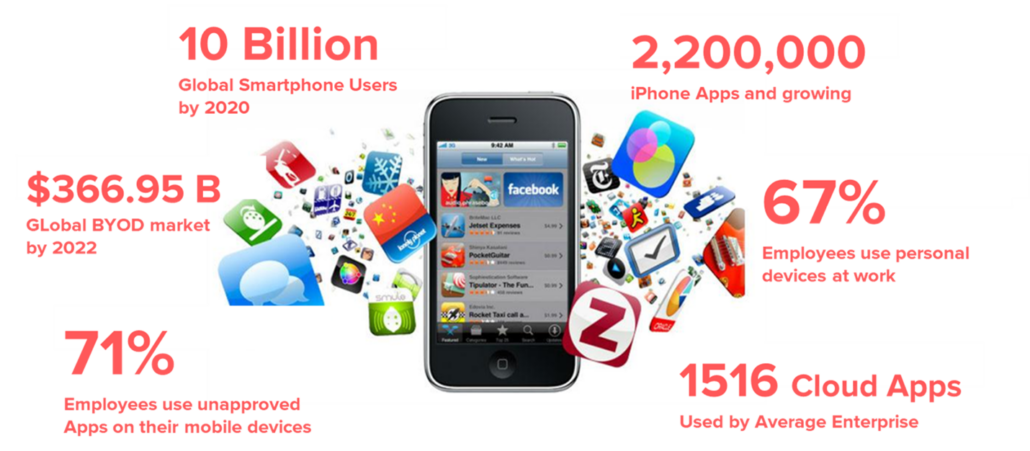Pretty much anyone in the Electronic Discovery (eDiscovery) space for more than a hot minute understands that ESI is electronically stored information, and yet this question actually packs an increasingly interesting punch. In an era of collaboration tools, ephemeral (self-destructing) messaging apps, the internet of things, and now Elon Musk’s proposed Neuralink chip embedded inside a human brain, answering this question is significantly more complicated.
What is potentially relevant has evolved substantially since I began my career in eDiscovery. The world has fundamentally shifted and we are using a wide array of new and legacy technologies to communicate, work, and interact. This paradigm shift has brought a veritable deluge of potentially relevant information to scour.

The simple answer is that ESI for the purposes of eDiscovery is a moving target that will continue to evolve with the tools we utilize to conduct business and interact with each other. The key to not drawing in this sea of data is twofold.
First, talk with custodians early to understand how and via what technology they communicate and conduct business. Second, prioritize and triangulate your data sources by digging into the richest sources first and using insights from each successive data source to refine and narrow the scope of review in subsequent ones.

What are Flavors of ESI?
Atypical data will not be involved in every case and relevant data may not always be in all of the varied sources outlined, but the important first step is to discuss these ESI sources. Key categories today that should be discussed in any custodial interview or while scoping an eDiscovery matter include the following:
- Electronic or hard copy documents (spreadsheets, presentations, documents, PDFs, etc.)
- Instant messaging (Jabber, Yammer, Facebook messenger)
- Collaboration tools (Slack, Teams)
- Text/SMS
- Messaging apps (We Chat, WhatsApp)
- Social media (Facebook, Instagram, Twitter, LinkedIn, Snapchat)
- Ephemeral messaging (Signal, Wikr, Telegram)
- Internet of things (Smart devices like Fitbits, smart watches, Alexa, Nest)

Where Can I Find ESI?
Initially, the transition from discovery to eDiscovery simply meant shifting from filing cabinets to desktop computer files and Outlook folders. Factors like cloud computing, the proliferation of bring-your-own-device (BYOD) policies, and third-party hosted applications have complicated the process of data identification. The rapid post-COVID-19 shift to remote work has also created a Zoom boom and opened up new data sources and locations to investigate.
Data architecture differs from organization to organization and the proliferation of third party managed and hosted applications including messaging apps, social media, and collaboration tools not to mention O365 and other enterprise-grade cloud systems makes it imperative that you speak with the tech experts within an organization early and engage external experts in the event that internal resources cannot paint a complete picture. There is no one right answer here, but places to look include but are not limited to: Company supplied computers, tablets and mobile devices, third-party applications and or cloud backups, Company shared drives and backups, Company managed cloud and backup, legacy backup devices, and more.
But Wait There’s More…
The speed of new ESI sources hitting the market is unprecedented. From the metaverse to Meta’s new Threads social media application new ways of creating ESI are popping up all the time.
And in some cases, like Threads, having massive adoption quickly. Threads took under a week to hit 100 Million subscribers. Staying in top of emerging data types is critical for any eDiscovery professional today.
Interested in ACEDS’s educational content? Subscribe to the ACEDS Blog for weekly blog updates: https://aceds.org/aceds-blog/
